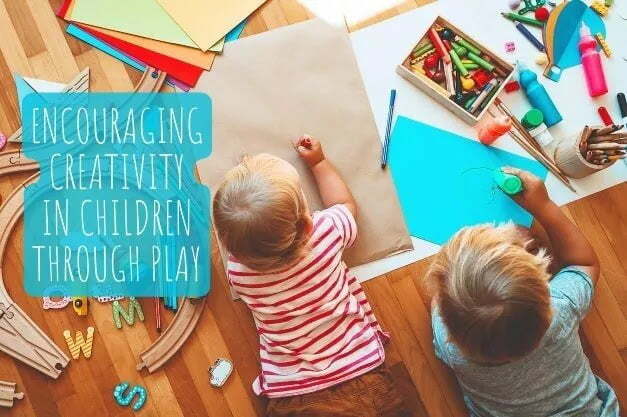As parents and caregivers, we all want our children to grow up to be successful, happy, and fulfilled individuals. One of the key factors that contribute to this is developing creativity in children. Here are some reasons why:
Creativity as a Crucial Skill for the Future
In today’s fast-paced and constantly changing world, creativity has become an essential skill. With the rise of automation and AI, many jobs that require routine and repetitive tasks are becoming automated.
On the other hand, jobs that require creativity, innovation, and problem-solving skills are in high demand. By encouraging creativity in children from an early age, we are setting them up for success in the future.
Benefits of Developing Creativity in Children
Apart from being a valuable skill for the future, creativity also has several benefits for children’s development, such as:
- Boosting self-esteem and self-expression
- Improving problem-solving and critical thinking skills
- Enhancing communication and collaboration skills
- Fostering emotional and social development
- Encouraging exploration and experimentation
Encouraging creativity in children through play is crucial for their overall development and future success. By providing them with opportunities to explore and experiment with their ideas, we can help them develop their creativity and set them on a path to a bright future.
How Play Fosters Creativity in Children
As children, play is an integral part of our lives. It’s how we explore the world, develop social skills, and express ourselves. But did you know that play also fosters creativity in children? Here’s how:
The Link between Play and Creativity
Play provides children with a safe and open space to explore their ideas, experiment with different materials, and take risks without fear of failure. This freedom to play and explore encourages children to think outside the box and come up with creative solutions to problems.
Different Types of Play that Encourage Creativity
Not all play is created equal when it comes to fostering creativity. Here are some types of play that have been shown to encourage creativity in children:
- Imaginative play: Children can use their imagination to create different scenarios and play out different roles.
- Art and craft activities: Children can experiment with different colors, shapes, and materials to create their own unique masterpieces.
- Building and construction play: Children can use blocks, Legos, or other building materials to create structures and designs.
- Outdoor and nature play: Children can explore and interact with nature, using it as inspiration for their creativity.
The Role of Toys and Materials in Fostering Creativity
Toys and materials play a crucial role in fostering creativity in children. Here are some ways to choose toys and materials that encourage creativity:
- Open-ended toys: Toys that can be used in multiple ways and allow for open-ended play are great for encouraging creativity.
- Natural materials: Natural materials like sticks, rocks, and leaves provide a sensory experience and encourage exploration and creativity.
- Art supplies: Providing children with a variety of art supplies like paints, markers, and clay encourages them to experiment with different mediums and express themselves creatively.
Play is an essential part of childhood, and it’s also a powerful tool for encouraging creativity in children. By providing children with the right environment, toys, and materials, we can help them unleash their creativity and set them on a path to a successful and fulfilling future.
Ways to Encourage Creativity in Children through Play
Now that we’ve explored the importance of creativity in child development and how play can foster creativity, let’s dive into some practical ways to encourage creativity in children through play:
1. Creating a Conducive Environment for Creative Play
Creating a conducive environment for creative play is crucial in fostering children’s creativity. Here are some ways to create such an environment:
- Allow children to have unstructured playtime where they can explore and play freely without interruption.
- Provide a dedicated space for play, whether it’s a playroom, a corner of a room, or even outside.
- Create an atmosphere that encourages exploration, risk-taking, and creativity. This can include decorating the play area with bright colors and interesting objects, playing music, or incorporating elements of nature.
2. Providing Open-Ended Toys and Materials
As mentioned earlier, open-ended toys and materials are great for encouraging creativity in children. Here are some examples of open-ended toys and materials:
- Blocks and Legos
- Playdough
- Art supplies like paints, markers, and crayons
- Natural materials like sticks, rocks, and leaves
- Costumes and dress-up clothes
- Dollhouses and figurines
3. Encouraging Imaginative and Pretend Play
Imaginative and pretend play is an excellent way to encourage creativity in children. Here are some ways to encourage this type of play:
- Provide children with props and toys that allow them to pretend to be someone else, such as costumes, hats, and masks.
- Encourage children to create their own stories and scenarios during playtime.
- Participate in their play and ask open-ended questions to spark their imagination.
4. Supporting Exploration and Experimentation
Supporting exploration and experimentation is crucial in encouraging creativity in children. Here are some ways to support this type of play:
- Encourage children to try new things and take risks during playtime.
- Provide children with opportunities to experiment with different materials and mediums.
- Allow children to make mistakes and learn from them.
Encouraging creativity in children through play is crucial for their overall development. By creating a conducive environment for creative play, providing open-ended toys and materials, encouraging imaginative and pretend play, and supporting exploration and experimentation, we can help children unleash their creativity and reach their full potential.
Remember, the most important thing is to let children play and explore freely, and to have fun while doing so!
Examples of Play Activities that Foster Creativity in Children
One of the best ways to encourage creativity in children is through play activities. Here are some examples of play activities that can help foster creativity in children:
1. Art and craft activities
Art and craft activities provide an excellent opportunity for children to explore their creativity. Whether it’s painting, drawing, or making sculptures, art activities allow children to express themselves in different ways. Encourage children to use their imagination and create something unique rather than focusing on creating something that is “perfect”.
2. Building and construction play
Building and construction play with blocks, Lego, or other materials can help children develop their problem-solving skills and spatial reasoning abilities. Children can experiment with different designs and structures, and learn from their mistakes. Encourage them to think outside the box and come up with creative solutions to building challenges.
3. Role-play and make-believe play
Role-play and make-believe play allow children to develop their social and emotional skills, as well as their imagination. Encourage children to use their imagination and create their own stories, characters, and scenarios. Provide them with props, costumes, and other materials to enhance their play.
4. Outdoor and nature play
Outdoor and nature play can inspire children’s creativity and curiosity. Children can explore the natural world and engage in imaginative play while developing their physical skills. Encourage children to use natural materials such as rocks, sticks, and leaves to create their own art or sculptures.
By providing children with a variety of play activities and materials, parents and caregivers can help foster creativity in children and help them develop important skills that will serve them well throughout their lives.
Conclusion
Encouraging creativity in children through play is crucial for their development and future success. As parents and caregivers, we can promote creativity by making play a priority in our children’s lives. Here are some key takeaways:
- Play is essential for children’s cognitive, social, and emotional development, and it provides a platform for exploring, experimenting, and creating.
- Creativity is a crucial skill for the future as it prepares children to adapt, innovate, and solve problems in an ever-changing world.
- By creating a conducive environment for creative play, providing open-ended toys and materials, encouraging imaginative and pretend play, and supporting exploration and experimentation, we can foster creativity in children.
- Play activities such as art and craft, building and construction play, role-play and make-believe play, and outdoor and nature play are excellent ways to encourage creativity in children.
- As parents and caregivers, we can play an essential role in promoting creativity through play by providing opportunities for play, participating in play activities, and providing guidance and support.
- Encouraging creativity in children through play has numerous benefits, including improved problem-solving skills, increased self-confidence, and better academic performance.
In conclusion, encouraging creativity in children through play is a valuable investment in their future success. By making play a priority, providing opportunities for creative play, and supporting our children’s exploration and experimentation, we can foster their creativity and help them develop the skills they need to thrive in the future.












